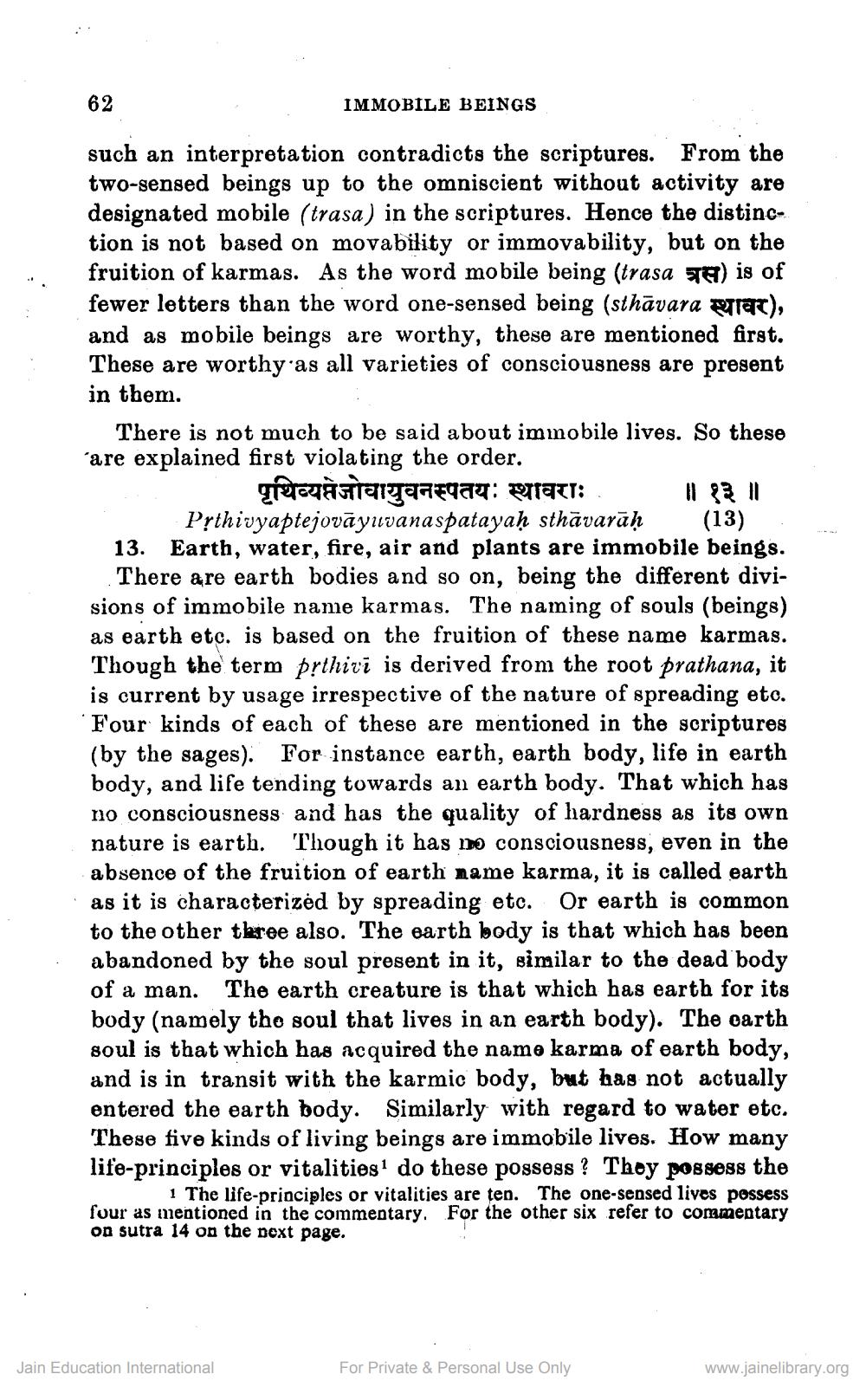________________
IMMOBILE BEINGS
such an interpretation contradicts the scriptures. From the
10-sensed beings up to the omniscient without activity are designated mobile (trasa) in the scriptures. Hence the distinction is not based on movability or immovability, but on the fruition of karmas. As the word mobile being (trasa Te) is of fewer letters than the word one-sensed being (sthāvara prat), and as mobile beings are worthy, these are mentioned first. These are worthy as all varieties of consciousness are present in them.
There is not much to be said about immobile lives. So these are explained first violating the order.
recàriagaafqay: Batt: Pythivyaptejovāyuvanaspatayaḥ sthāvarāḥ (13) 13. Earth, water, fire, air and plants are immobile beings.
There are earth bodies and so on, being the different divisions of immobile name karmas. The naming of souls (beings) as earth etc. is based on the fruition of these name karmas. Though the term prthiri is derived from the root prathana, it is current by usage irrespective of the nature of spreading eto. Four kinds of each of these are mentioned in the scriptures (by the sages). For instance earth, earth body, life in earth body, and life tending towards an earth body. That which has no consciousness and has the quality of hardness as its own nature is earth. Though it has no consciousness, even in the absence of the fruition of earth name karma, it is called earth as it is characterized by spreading etc. Or earth is common to the other three also. The earth body is that which has been abandoned by the soul present in it, similar to the dead body of a man. The earth creature is that which has earth for its body (namely the soul that lives in an earth body). The oarth soul is that which has acquired the name karma of earth body, and is in transit with the karmic body, but has not actually entered the earth body. Similarly with regard to water etc. These five kinds of living beings are immobile lives. How many life-principles or vitalities' do these possess? Thoy possess the
1 The life-principles or vitalities are ten. The one-sensed lives possess four as mentioned in the commentary. For the other six refer to commentary on sutra 14 on the next page.
Jain Education International
For Private & Personal Use Only
www.jainelibrary.org




